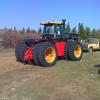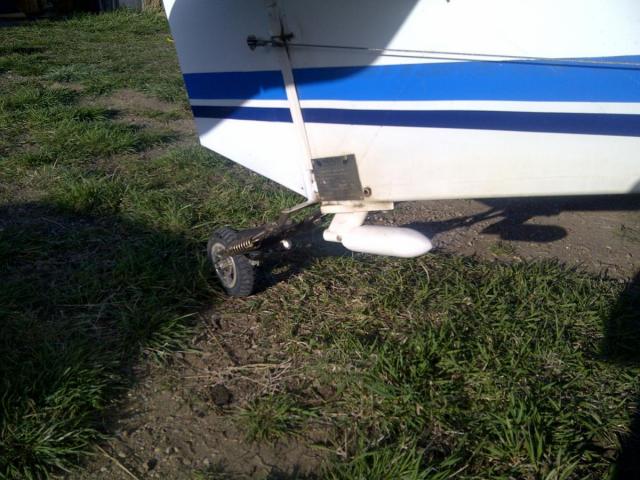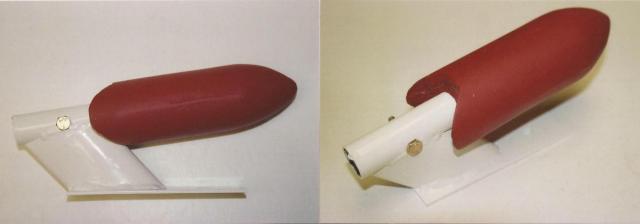-
Content count
192 -
Joined
-
Last visited
Posts posted by saskavid
-
-
Yes that is pretty cool!!!
-
Hoping for the speediest recovery... get well..
-
Remembering back to the early days of ethanol and fiberglass fuel tanks, most of the avids were poly ester resin and the kitfoxes were vinyl ester resins. The poly tanks couldn't take any ethanol whereas the vinyl resin tanks seemed to suffer no ill effects from the alcohol laced fuel. I also remember poly tanks using ethanol that were premixing synthetic 2 stroke oil were showing no ill effects as well. The gas I use in my poly tanks is supposed to be ethanol free premium. Haven't had any problems but I never leave fuel in the tanks between flights. As well I am mixing some 2 stroke amsoil with the fuel at around 350 to 1 to keep a barrier oil film on the tanks in the event I do get some ethanol in the tanks at some point.
2 people like this -
This was an epic journey. Thankyou so much for your story with all of us.
-
Engine is a Hirth 2706-2C with free air heads and self made ducting. Saved nearly 20lbs by going Free-Air. Not absolutely sure it was the best idea but at the time I was determined to make an Avid that weighed less than 500lbs. The pay off is absolutely outstanding performance but the sacrifice is very critical tuning in jetting and prop pitch adjustments. I may have to change jetting and prop pitch multiple times as daytime temps change to control EGTs as optimal as possible. I get better than 1000FPM climbs and cruise at 85-90MPH indicated. Fuel burn is fairly steady around 5gph. Take offs are usually around 100ft and stalls are typically around 40mph or under with no flaps deployed. Fun airplane to fly and very capable in off airport applications. If I had to do it all over again I would probably keep the fan cooling or go with the 582 with oil injection. I had some mechanical problems with the Hirth initially but I hope that is all behind me now. The learning curve was very painful.
so what make of carbs does the hirth use? In terms of controlling mixture /egt you may want ot look into a hacman to help with managing your fuel to air ratio. The bing 54's on the 582 are what the hac is set up to work with but can be adapted to others most likely with some finingering. Joey has a thread dealing with the installation on a 582 posted here.
-
Your bird is turning into one seriously hot looking plane!!!!

-
It was meant to be fun and it certanly was.

-
You guys are mean!!! I made it to look like the flaperon ballances but if it looks like a plane penis or a sex toy so be it lol.I'm not taking it off. It serves a purpose other than revealing what is on other peoples minds within the physical symbolism of what we build.
 .
. -
-
I've always been leery of that wire connection. rotax manual says to shrink tube the connection. Easier said than done in some installations. Mine are tied together with a careful application of electrical tape.
1 person likes this -
I'd be right curioius to know the fluid volume requirements of those calipers when you throw the brakes on....
-
so what is the serial number of this air frame/ project as it came from avid? There are some implications with crooked airframes causing a bit of this maybe at times but sounds like you have a bigger problem with the flap attach ribsbeing glued in the wrong place maybe???
-
Well Randy was closest....It bolts on to the tail airplane and sits just under the tail spring as a ballast weight to get the cg back a bit further. Weighs close to 7 pounds. MY initial idea was to have it so I could have interchangeable heads of various weight and just swap them out depending where I wanted to fly with the cg and how much baggage I had in the plane. Made a 12 pounder as well just never stuck it on the plane yet. Just seems too heavy for the plane. Also can act as a tail skid in the event u break the tail spring on landing and need to get out of somewhere without another spring to put on the plane right away....though yo would make a bit of a mess of it better it than the rest of the plane.
-
-
I'm pretty sure this stuff on this file was done by a guy named Lee Dubay waaay back in the late 80's. neat to see it all tabled in one source like this!!!
-
i'll add these thoughts. for optimum steering ease and responseiveness the pivot bolt should in theory be at the same angle as the rudder hinges. Not always pracital and with a short coulped aircraft with tall legs the handleing can get a bit more than squirrley. I did fly my matco tw equipped avid like that for a period of time got along with it but always had to be very attentive of directional control tapping one brake or the other. Could spin it on a dime good brakes or pissy brakes didn't matter. Pivot bolt vertical to the ground and brakes up to snuff so u can unlock the tail wheel on demand is best option in my opinion.
1 person likes this -
a beautiful plane!!!What else can be honestly said. Thanks for sharing!!
-
Thanks for the replies. I've used the 85/15 ratio of water to coolant every summer I've had the plane. It just doesn't cool like it used to for a given air temp. thought the culprit might be a partly stuck or malfunctioning thermostat but it was workiing fine. but noticed it had a lot of yuck on it that I would call glycol slime built up on it. And it has been building up over time probably throughout the entire cooling system effecting heat transfer qualities. the rad looks clean enough inside but any ammount of film is gonna effect cooling so want to get it as clean as I can as safe as I can.
Mike
-
just wondering if anyone has used those prestone flush and cleaner products containing sodium citrate on their rotax engine and if it is safe to do so? Don't know what rotax recomends just know I'm running a bit warmer than I should be for a given air temp and a bit of a gummed up cooling system is the only culprit left.
-
Pretty hard not to like the looks of this aircraft! Should be a fun bird to fly.
-
Ed:
Matco probably only gives a 600 psi rating to their masters because that is the psi limit that their bottom end systems are engineered to work effectively to. There are so many wasy to configure mc's in a toe brakeing system and all the variables feed off each other.ultimately the weakest link is the make or break for how much line psi any system will develop. the weakest link typically is that most brakesystems for ac are bult to known set of compromises to control overall weight. Herman makes valid points about the 1/2 to 5/8 bore scenario, but in the typical avid system/setup, the smaller the bore the furthur the mc must stroke to move the same ammount of fluid for activation as it's larger counterpart and hence less mechanical leverage because of the extra movement. So basically gain leverage in one area lose it in another>
-
Yup it is the one with the big black knob says primer on it, and once they leak it's a throw away. Bob Robertson of light engine left me a phone message and told me as much. I pulled the end with the fuel fittings off but couldn't get the knob off the shaft without destroying it so yes it is replacement time. And the brand name was actually Dapco made in Dexter Michigan.Sorry for the confusion. This primer is probably the original that came ith the plane.
Mike
-
Guess the next step is to take it off and see if it is possible to pull it appart and if then what can be done. When time permits I'll get on it and report back as what's what.
-
Is it possible to repair those dexter fuel engine primers once they start to leak around the shaft or is it a toss and replace repair solution? Mine decided to start barfing fuel around the plunger shaft tonite.Just wondering if anyone has done an O ring replace to fix this or if its possible?
thanks Mke



Ironman Al's barn find
in Avidfoxflyers General Hangar
Posted
Going to be a fun aircraft for sure.